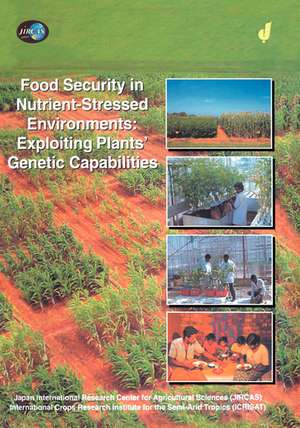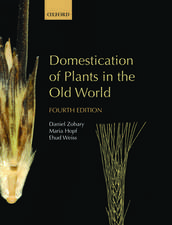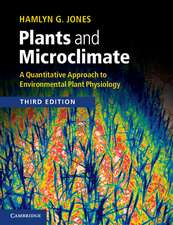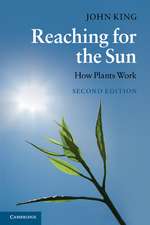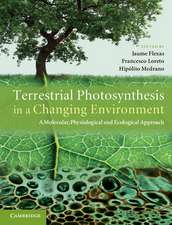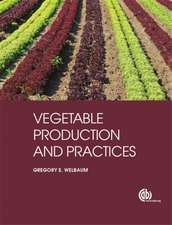Food Security in Nutrient-Stressed Environments: Exploiting Plants’ Genetic Capabilities: Developments in Plant and Soil Sciences, cartea 95
Editat de J.J. Adu-Gyamfien Limba Engleză Hardback – 31 ian 2003
| Toate formatele și edițiile | Preț | Express |
|---|---|---|
| Paperback (1) | 1231.95 lei 43-57 zile | |
| SPRINGER NETHERLANDS – 29 ian 2011 | 1231.95 lei 43-57 zile | |
| Hardback (1) | 1237.61 lei 43-57 zile | |
| SPRINGER NETHERLANDS – 31 ian 2003 | 1237.61 lei 43-57 zile |
Din seria Developments in Plant and Soil Sciences
- 18%
 Preț: 1225.94 lei
Preț: 1225.94 lei -
 Preț: 391.79 lei
Preț: 391.79 lei - 18%
 Preț: 1225.94 lei
Preț: 1225.94 lei - 18%
 Preț: 1228.29 lei
Preț: 1228.29 lei - 18%
 Preț: 1246.95 lei
Preț: 1246.95 lei - 24%
 Preț: 1073.19 lei
Preț: 1073.19 lei - 18%
 Preț: 970.70 lei
Preț: 970.70 lei - 24%
 Preț: 1073.79 lei
Preț: 1073.79 lei -
 Preț: 396.24 lei
Preț: 396.24 lei -
 Preț: 386.81 lei
Preț: 386.81 lei - 15%
 Preț: 699.93 lei
Preț: 699.93 lei -
 Preț: 384.86 lei
Preț: 384.86 lei - 18%
 Preț: 1221.69 lei
Preț: 1221.69 lei - 18%
 Preț: 1233.06 lei
Preț: 1233.06 lei -
 Preț: 399.12 lei
Preț: 399.12 lei - 18%
 Preț: 1227.67 lei
Preț: 1227.67 lei -
 Preț: 383.93 lei
Preț: 383.93 lei - 18%
 Preț: 1826.85 lei
Preț: 1826.85 lei - 18%
 Preț: 1232.09 lei
Preț: 1232.09 lei - 15%
 Preț: 646.94 lei
Preț: 646.94 lei - 18%
 Preț: 1231.47 lei
Preț: 1231.47 lei - 15%
 Preț: 650.55 lei
Preț: 650.55 lei - 15%
 Preț: 638.24 lei
Preț: 638.24 lei - 18%
 Preț: 955.08 lei
Preț: 955.08 lei -
 Preț: 385.61 lei
Preț: 385.61 lei -
 Preț: 382.36 lei
Preț: 382.36 lei -
 Preț: 407.98 lei
Preț: 407.98 lei -
 Preț: 393.35 lei
Preț: 393.35 lei - 18%
 Preț: 1224.54 lei
Preț: 1224.54 lei - 18%
 Preț: 1222.01 lei
Preț: 1222.01 lei - 18%
 Preț: 1228.15 lei
Preț: 1228.15 lei -
 Preț: 382.95 lei
Preț: 382.95 lei - 18%
 Preț: 1227.84 lei
Preț: 1227.84 lei
Preț: 1237.61 lei
Preț vechi: 1509.29 lei
-18% Nou
Puncte Express: 1856
Preț estimativ în valută:
236.89€ • 257.40$ • 199.12£
236.89€ • 257.40$ • 199.12£
Carte tipărită la comandă
Livrare economică 21 aprilie-05 mai
Preluare comenzi: 021 569.72.76
Specificații
ISBN-13: 9781402006036
ISBN-10: 1402006039
Pagini: 356
Ilustrații: VII, 344 p.
Dimensiuni: 178 x 254 x 25 mm
Greutate: 1.02 kg
Ediția:2002
Editura: SPRINGER NETHERLANDS
Colecția Springer
Seria Developments in Plant and Soil Sciences
Locul publicării:Dordrecht, Netherlands
ISBN-10: 1402006039
Pagini: 356
Ilustrații: VII, 344 p.
Dimensiuni: 178 x 254 x 25 mm
Greutate: 1.02 kg
Ediția:2002
Editura: SPRINGER NETHERLANDS
Colecția Springer
Seria Developments in Plant and Soil Sciences
Locul publicării:Dordrecht, Netherlands
Public țintă
ResearchCuprins
1. Welcome address.- 2. Government of Japan Project activities at 1CRISAT 1984–1999.- 3. Physiological traits for crop yield improvement in low N and P environments.- 4. Prospects for using conventional techniques and molecular biological tools to enhance performance of ‘orphan’ crop plants on soils low in available phosphorus.- 5. Ex-ante impact assessment and economic analysis of breeding for nutrient efficiency and alternate strategies, a conceptual model and research issues: A socio-economist’s view.- 6. Breeding for low-nutrient environments: Is it sustainable?.- 7. Breeding for low-nutrient environments.- 8. Genetic adaptation of crop plants to low-nutrient environments: morphological and ecophysiological characteristics of adaptation.- 9. Genotypic variability and physiological characteristics of crop plants adapted to low-nutrient environments.- 10. Physiological adaptations for nitrogen use efficiency in sorghum.- 11. Photosynthesized carbon translocation and distribution of crops adapted to low-nutrient environments.- 12. Varietal differences in root growth as related to nitrogen uptake by sorghum plants in low-nitrogen environment.- 13. Genotypic variability in phosphorus solubilizing activity of root exudates by pigeonpea grown in low-nutrient environments.- 14. Root cell-wall properties are proposed to contribute to phosphorus (P) mobilization by groundnut and pigeonpea.- 15. Role of soil microorganisms in improving P nutrition of plants.- 16. Phosphorus use efficiency as related to sources of P fertilizers, rainfall, soil, crop management, and genotypes in the West African semi-arid tropics.- 17. Modelling root-induced solubilization of nutrients.- 18. Scope for genetic manipulation of mineral acquisition in chickpea.- 19. Aluminum tolerance innodulated N2-fixing legumes species native to two contrasting savanna sites.- 20. Effect of rock phosphate and superphosphate fertilizer on the productivity of maize var. Bisma.- 21. Candidate mechanisms.- 22. Assessing germplasm collections for traits useful in plant nutrition.- 23. Root exudates as mediators of mineral acquisition in low-nutrient environments.- 24. Genetic control of root exudation.- 25. Transporter genes to enhance nutrient uptake: Opportunities and challenges.- 26. The phosphate uptake mechanism.- 27. Breeding for better symbiosis.- 28. Genetic approaches for manipulating crop plants to enhance root exudation and access low nutrients in the rhizosphere.- 29. Breeding crops for enhanced micronutrient content.- 30. Appropriate farm management practices for alleviating N and P deficiencies in low-nutrient soils of the tropics.- 31. Farmer preferences and legume intensification for low nutrient environments.- 32. Nutrient balances: A guide to improving the sorghum- and groundnut-based dryland cropping systems in semi-arid tropical India.- 33. Preplant moisture and fertility conditions as indicators of high and stable yields in rainfed cropping systems.- 34. Role of modelling in improving nutrient efficiency in cropping systems.- 35. Combining genetic improvement with natural resource management.- 36. Closing remarks.- 37. Future research needs, priorities, and strategies.- 38. Participants.
